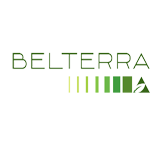

THE PROGRAM
The JUNTOS program has been created to promote business models that include Amazon´s small producers in low-carbon livestock farming, with increased productivity and income.
KEY TARGETS

Increase the income of small producers

ensure traceabillity from the beginning of the chain

stop deforestation on properties
MAIN GOALS
People
- 3.500 families involved
- 1,2 x family income increase
- 6x income increase/ha intensified
Forest
- 380 thousand hectares monitored
- 50 thousand hectares recovered
- Zero deforestation on all properties involved
Livestock
- 2,7x more productivity
- +350.000 calves tracked
- Soil increased biodiversity and carbon retention
+500 thousand
family farming families (IBGE, 2017)
73% of the area
occupied by family farmers from rural settlements (IPAM, 2022)
33 million hectares
is the area of settlements in the Legal Amazon (IPAM, 2022)
26%
is the annual average of what is deforested in settlements after 2008 (IPAM, 2022)
47%
of all calf production is found on small properties. (MT, RO, PA) (IBGE, 2017)
0.92 heads/ha
is the average occupation in the region (ABIEC,2021)
10.5MM hectares
or 50% of open pastures on small properties have a medium or high level of degradation in the region. (Mapbiomas, 2023)
WHO are THE Junto´s HUBS:
Rural B Corporations, cooperatives or local arrangements, or even farmers in finishing, which provide technical assistance and inputs necessary for the implementation of integrated systems or partnerships in production.
Resolves the main bottlenecks of small producers, bringing them to the market, formalizing their activity.



Rio Capim
HUB
Rio Capim
HUB
This hub transfers small producers of calves from calving (the phase from birth to weaning) to a system of rearing cattle (the growth phase), when productivity is higher and risk is lower. The aim is to relieve them of the complexity and risk involved in rearing.
The hub carries out rearing in an intensified model within an area recovered with silvopastoral systems. At this stage, an individual traceability system will be implemented to guarantee production compliance from the outset.
After weaning, the calves will be taken to the partner properties, where the animals will gain weight over the following 12 months. Finally, the cattle will be sent to fattening farms or feedlots. To test the model, Rio Capim is carrying out a pilot project involving 25 properties.

Investments
JBS Fund for the Amazon´s catalytic investment leverages other sources of resources (PRONAF and Private Capital) to boost producers income.
Total Investment-JBS Fund for the Amazon
Credit Granted
Investment return rate 22%

CRITERIA FOR
APPROVAL OF PROJECTS IN THE PROGRAM
PRODUCTION CHAIN AXIS
(in converted areas)

1
Have a robust social counterpart, promoting the professionalization of young people producers in the chain.
2
Have an environmental impact by reducing emissions and deforestation
3
Models must be or become economically self-sustainable and have high scale potential
4
Diversification together with livestock production (preferably)
5
Innovative proposals that need validation to access capital market
Partners




